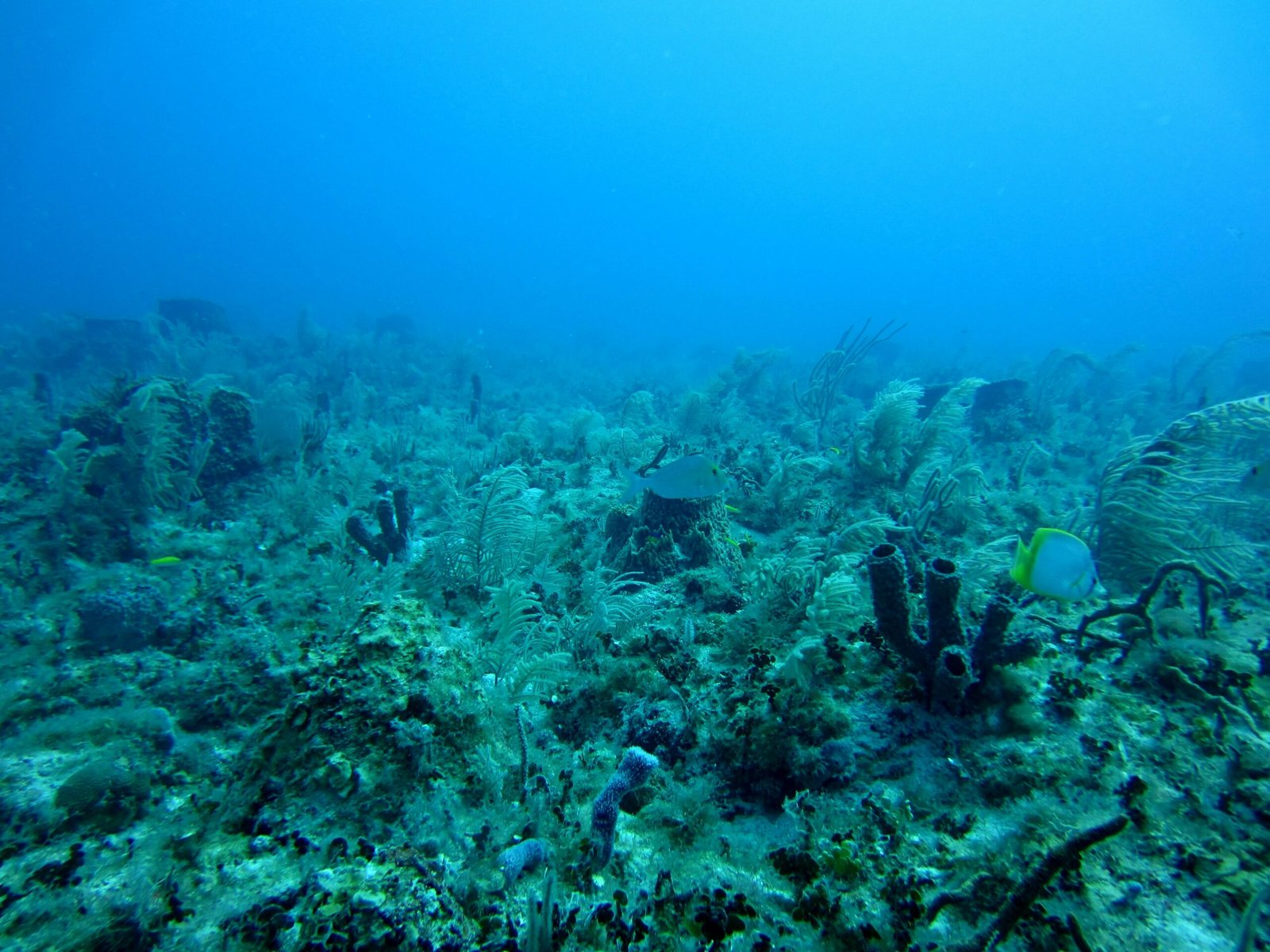Introduction to Algae
Algae, a diverse group of photosynthetic organisms, are fundamental to many ecosystems across the globe. Belonging to the kingdom Protista, they are primarily aquatic and can be found in environments ranging from freshwater lakes and rivers to oceans and even damp terrestrial conditions. Algae vary widely in size, from microscopic phytoplankton to large, complex formations like giant kelp.
Historically, algae have played a crucial role in the evolution of plant life. Approximately 2.7 billion years ago, cyanobacteria, also known as blue-green algae, were among the earliest organisms to perform photosynthesis, significantly contributing to the production of atmospheric oxygen. This monumental shift paved the way for the evolution of higher plants and the diversification of life on Earth.
From a cellular perspective, algae display significant diversity. They can be unicellular, colonial, or multicellular, with some possessing simple cellular structures while others have complex organizations. Chloroplasts, specialized organelles within algal cells, enable the conversion of light energy into chemical energy through photosynthesis. This capability underscores algae’s pivotal role in forming the base of numerous food webs and contributing massively to global carbon and oxygen cycles.
Algae’s classification within the plant kingdom has historically been a topic of debate, primarily due to their vast diversity and unique characteristics. They are often distinguished from true plants based on their lack of typical plant structures such as roots, stems, and leaves, as well as their distinctive reproductive mechanisms. Nonetheless, their ability to undergo photosynthesis and their contribution to primary productivity integrate them into broader ecological and evolutionary discussions alongside traditional plants.
In essence, algae serve as a cornerstone of aquatic ecosystems and have a profound historical and ongoing impact on life on Earth. Their study not only broadens our understanding of biological diversity but also highlights the interconnectedness of life across different evolutionary timelines.
Types of Algae
Algae, a diverse group of photosynthetic organisms, come in various forms, each with unique characteristics, pigmentation, and habitats. Among the primary types, green, brown, and red algae are the most prominent, representing the vast spectrum of diversity within this group. Understanding these differences is crucial for comprehending the broader ecological role of algae.
Green algae, belonging to the Chlorophyta division, are primarily found in freshwater environments, although some species thrive in marine settings and moist terrestrial habitats. Their distinctive green color is due to the presence of chlorophyll a and b, which are essential for photosynthesis. Structurally, green algae exhibit a wide range from unicellular forms to complex multicellular organisms like the sea lettuce, Ulva. These algae are pivotal in aquatic ecosystems, contributing significantly to oxygen production and serving as a food source for varied aquatic life.
Brown algae, classified under the Phaeophyceae class, predominantly inhabit marine environments, particularly in colder waters. Their characteristic brown coloration is due to the presence of fucoxanthin pigment, which masks the green of chlorophyll. Brown algae are generally large and multicellular, with kelp being a well-known example. Kelp forests, found along coastlines, are vital ecosystems providing habitat and food for numerous marine species. Additionally, brown algae play a critical role in the carbon cycle through their photosynthetic activity.
Red algae, or Rhodophyta, are mostly marine organisms, often found in deeper waters where light penetration is low. The red coloration arises from phycoerythrin pigment, which allows these algae to absorb blue light and produce energy via photosynthesis. Red algae range from microscopic forms to large, leafy species and are known for their complex cell structures. They are also significant in the formation of coral reefs through their calcium carbonate deposits, helping build and maintain these critical marine structures.
In essence, the diverse types of algae—green, brown, and red—each contribute uniquely to their respective ecosystems. Their varied pigmentation, structural complexity, and habitat preferences underscore the ecological importance of this group of organisms. Understanding the characteristics and distribution of algae types provides invaluable insight into the functioning of aquatic environments globally.
Reproduction and Life Cycles of Algae
Reproduction in algae encompasses a wide array of strategies, underpinning their adaptability and ecological success. Algae can reproduce through both s and as means, each offering distinct advantages that contribute to their proliferation and survival in diverse environments.
Reproduction is highly prevalent among algae, primarily because it allows for rapid population growth. Common methods include binary fission, fragmentation, and spore formation. Binary fission involves a single cell dividing into two identical daughter cells, while fragmentation entails the breakage of an algal filament into several pieces, each of which develops into a new organism. Spore formation, on the other hand, involves the production of specialized cells called spores, which can withstand adverse conditions and germinate when environmental circumstances become favorable.
Reproduction, although less common than other methods, plays a crucial role in genetic diversity and adaptability. It involves the fusion of gametes, resulting in the formation of a zygote, which eventually develops into a new organism. Algae exhibit various forms of s reproduction, including isogamy, anisogamy, and oogamy. Isogamy involves the fusion of identical gametes, whereas anisogamy entails the fusion of dissimilar gametes. Oogamy, a more advanced form, involves a large, immobile egg and a smaller, motile sperm.
The life cycles of algae can be complex, often encompassing multiple stages and forms. Some algae, such as green algae, follow a haplontic life cycle where the dominant phase is haploid, while others, like brown algae, may exhibit a diplontic life cycle where the dominant phase is diploid. Additionally, some algae exhibit an alternation of generations where both haploid and diploid stages are equally prominent. This alternation can be isomorphic, with similar-looking stages, or heteromorphic, with distinct morphological differences between stages.
Understanding the varied reproductive strategies and life cycles of algae not only sheds light on their evolutionary success but also informs ecological studies and biotechnological applications. Their ability to thrive across myriad environments underscores the significance of their reproductive versatility.
Role of Algae in Ecosystems
Algae play a crucial role in ecosystems, particularly in aquatic environments. As primary producers, they form the base of aquatic food webs, supporting a wide range of marine and freshwater organisms. Through the process of photosynthesis, algae convert carbon dioxide into organic matter while releasing oxygen as a byproduct. This process not only provides essential sustenance for herbivores and other aquatic life but also significantly contributes to the global oxygen supply. It is estimated that algae contribute to nearly 50% of the oxygen present in the Earth’s atmosphere.
Beyond oxygen production, algae are integral to the global carbon cycle. They absorb carbon dioxide—an essential greenhouse gas—during photosynthesis, acting as carbon sinks. This function aids in mitigating the effects of climate change by reducing the amount of CO2 in the atmosphere. Moreover, when algae die, they sink to the ocean floor, sequestering carbon in deep marine sediments. This long-term storage of carbon helps regulate global climate patterns.
Algae also engage in symbiotic relationships with various organisms, enhancing biodiversity. For instance, lichens are symbiotic communities of algae and fungi, thriving in diverse habitats and contributing to soil formation and nutrient cycles. Additionally, certain species of algae form beneficial alliances with coral reefs. Zooxanthellae, a type of dinoflagellate algae, live within coral tissues and provide essential nutrients through photosynthesis, which in turn supports coral growth and reef development. This symbiosis is vital for the health and sustainability of coral reef ecosystems.
In summary, algae are indispensable to ecosystem functioning. Their roles in oxygen production, carbon sequestration, and symbiotic interactions underscore their ecological importance. Understanding these roles further highlights the need for conservation and responsible management of aquatic environments to ensure the continued health and vitality of these crucial organisms.
Algae are a versatile and adaptive group of photosynthetic organisms found across a wide array of habitats, including freshwater, marine environments, and terrestrial locations. Their distribution is highly influenced by a suite of environmental factors, which contribute to their immense diversity.
Freshwater Habitats
Freshwater bodies such as rivers, lakes, and ponds are prime environments for many species of algae. The conditions here, including light availability, nutrient concentrations, and water temperature, play critical roles in determining the abundance and variety of algal species. For example, oligotrophic lakes, which are nutrient-poor, tend to support less algal biomass compared to eutrophic lakes, which are nutrient-rich and often experience algal blooms.
Marine Environments
The vast expanse of the oceans hosts a remarkable array of algal species. Marine algae can be found in both the photic zone, where sunlight penetrates, and the deeper, aphotic zone. Factors such as salinity, light penetration, and nutrient upwelling dictate the distribution of marine algae. Notably, phytoplankton, which include numerous algal species, form the foundation of the oceanic food web, supporting an extensive range of marine life.
Terrestrial Locations
Algae are not confined to aquatic environments; many species thrive on terrestrial substrates. These include moist soils, tree trunks, rocks, and even snow surfaces. Terrestrial algae often exhibit resilience to extreme conditions such as desiccation and UV radiation, enabling them to colonize diverse niches. Lichens, symbiotic associations between algae and fungi, are prominent examples of algae’s terrestrial adaptability.
Overall, the ecological distribution of algae is a testament to their adaptability and ecological significance. Various environmental factors, including light, temperature, nutrient availability, and moisture, significantly influence their distribution patterns across multiple habitats. This ecological versatility underscores algae’s vital role in sustaining numerous ecosystems worldwide.
Human Uses and Benefits of Algae
Algae, an incredibly diverse group of photosynthetic organisms, serve a multifaceted role in human life. Their utilization ranges from basic nutritional supplements to advanced bioengineering applications. In the food industry, algae are commonly used as a base ingredient and nutritional enhancer. For example, spirulina and chlorella are marketed as superfoods due to their high protein, vitamin, and mineral content. These microalgae are often found in dietary supplements, smoothies, and health bars, offering a potent combination of nutrients and antioxidants.
In the medical field, algae exhibit significant potential. Various algal species contain bioactive compounds that show promise in pharmaceutical applications. For instance, certain types of algae produce antiviral, antibacterial, and anti-inflammatory substances. These compounds are currently under research for their efficacy in treating illnesses ranging from common infections to chronic diseases. Algae also provide numerous enzymes and polysaccharides that are useful in wound healing and cosmetic formulations.
Algae-derived biofuels represent a promising solution to future energy needs. Algae grow quickly and can produce substantial amounts of biomass suitable for conversion into biofuels like biodiesel, bioethanol, and biogas. These fuels are cleaner alternatives to fossil fuels and can significantly reduce greenhouse gas emissions. The high growth rate of algal biomass means that they can be harvested frequently, ensuring a sustainable and renewable energy source.
Environmental applications of algae are also noteworthy. Algal bio-remediation is an emerging field where algae are used to cleanse polluted environments. Algae can absorb heavy metals and other contaminants from water bodies, making them an effective tool in wastewater treatment. Additionally, algae play a critical role in carbon sequestration, absorbing considerable amounts of carbon dioxide during photosynthesis and helping to mitigate the effects of climate change.
Overall, the diverse applications and benefits of algae underscore their importance. From enhancing human health to providing sustainable energy and addressing environmental challenges, algae exhibit numerous functional uses in modern society.
Algae, despite their crucial role in aquatic ecosystems, present significant challenges, particularly when their growth becomes unmanageable. One of the most pressing concerns is harmful algal blooms (HABs). These blooms occur when algae, particularly cyanobacteria, proliferate excessively, often due to nutrient enrichment from agricultural runoff, wastewater discharge, and other anthropogenic activities. HABs can produce toxins harmful to aquatic life, humans, and animals, resulting in fish kills, marine mammal deaths, and human illnesses such as respiratory problems and liver diseases.
The impact of HABs on water quality cannot be overstressed. These blooms can create hypoxic or anoxic conditions, depleting oxygen levels in the water and causing dead zones where aquatic life cannot survive. The degradation of water quality also affects drinking water supplies and recreational waters, posing significant public health risks. Furthermore, the presence of toxins released by these blooms can complicate water treatment processes, necessitating advanced and often costly purification methods.
Managing and controlling harmful algal blooms involve both preventive and remedial measures. Preventive strategies include reducing nutrient loads entering water bodies through better agricultural practices, improving wastewater treatment facilities, and controlling stormwater runoff. For instance, implementing buffer zones around water bodies and promoting the use of fertilizers with reduced phosphorus content can significantly lower the risk of nutrient enrichment.
Remedial measures often involve chemical, biological, or physical interventions. Chemical treatments, such as algaecides, can be effective but may have undesirable side effects on non-target organisms and the broader ecosystem. Biological control methods, such as introducing algal grazers or using natural bacterial populations to outcompete harmful algae, offer more sustainable solutions but require careful management. Physical interventions, including aeration and the removal of algal mats, can also help mitigate the severity of blooms.
Both natural and human-induced factors contribute to the challenges associated with algae. Natural events like weather patterns and climate change can exacerbate algal growth by influencing water temperature, light availability, and nutrient distribution. Human activities exacerbating these challenges highlight the necessity of integrated management approaches that address both immediate symptoms and underlying causes.
Future Directions in Algae Research
Algae research is a rapidly advancing field, driven by the promise of innovative applications and sustainable solutions. Scientists are continuously exploring new avenues to harness the potential of these versatile organisms. One of the primary focuses is on enhancing the efficiency of algae biofuel production. Breakthroughs in genetic engineering and metabolic pathway optimization are enabling researchers to increase lipid yields, which are pivotal for biofuel generation. These advancements could significantly reduce reliance on fossil fuels and contribute to energy sustainability.
In addition to biofuels, algae’s role in bioremediation is gaining traction. Algae can absorb heavy metals and other pollutants from contaminated water, presenting a natural and cost-effective solution for environmental cleanup. Current research is delving into understanding the mechanisms behind algae’s absorption capabilities and improving their effectiveness in diverse environmental settings.
The pharmaceutical and nutraceutical industries are also witnessing a surge in algae-based innovations. Algae are rich in bioactive compounds that possess antimicrobial, antiviral, and anti-inflammatory properties. Researchers are investigating these compounds with the aim of developing new drugs and health supplements. The long-term potential includes algae-derived therapies for a wide range of health conditions.
Moreover, advancements in biotechnology are facilitating the development of algae-based bioplastics. These bioplastics offer an eco-friendly alternative to conventional plastics, addressing the mounting issue of plastic pollution. Efforts are being made to enhance the material properties and scalability of algae-derived plastics to make them viable for commercial use.
Finally, the field of carbon capture and sequestration is exploring the role of algae in mitigating climate change. Algae’s high photosynthetic efficiency makes them effective agents for capturing carbon dioxide. Research initiatives are focusing on optimizing algae cultivation systems and integrating them into existing industrial processes to enhance carbon sequestration efforts.
Continued investment and interdisciplinary collaboration will be crucial in realizing the full potential of algae research. The merging of biological sciences, engineering, and environmental studies holds the promise of innovative solutions that leverage algae to meet some of the most pressing challenges of our time.





















+ There are no comments
Add yours